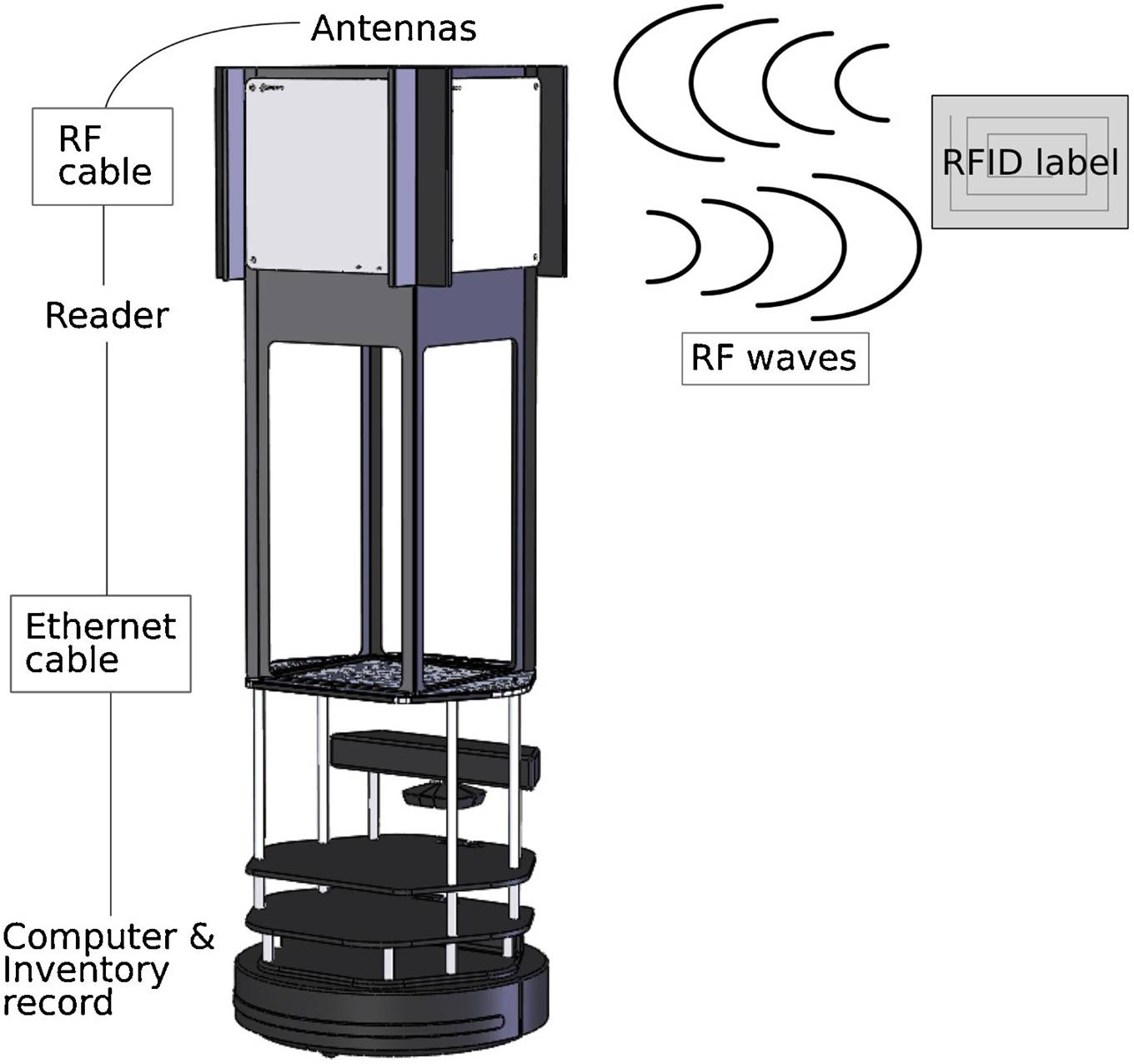DTIC researchers develop 99.5% reliable automated inventory systems
DTIC researchers develop 99.5% reliable automated inventory systems
A study led by Rafael Pous, director of the Ubiquitous Computing Applications Laboratory (UbiCA Lab), with Victor Casamayor Pujol, Marc Morenza-Cinos and Bernat Gascón, members of his research team, published on 26 June in the advanced online edition of the journal Computers in Industry.

Most retail store processes depend on perpetual, highly accurate inventories (stock management and forecasting, compliance, orders, etc.). However, perpetual inventory systems are inaccurate due to theft and misplacement, and manual inventories, including those using RFID (Radio Frequency Identification), are expensive and tedious.
Currently, there are three promising solutions on the market for automatic inventories: smart shelves, aerial antennas and inventory robots. “Our solution belongs to this third type of automated inventory systems”, says Rafael Pous, a researcher at the UPF Department of Information and Communication Technologies (DTIC).
One of the most promising possibilities for automated inventories are inventory RFID-based robots. “However, current inventory robots are not yet completely autonomous”, Pous adds. The reason is that they require the manual creation of a map of the store before they can operate in it.
A study published on 26 June in the advanced online edition of the journal Computers in Industry, raises the problem of counting inventory in retail stores and proposes a solution based on a multi-robot system. The paper presents the development of an algorithm that determines the state of the problem using the same RFID labels retailers add to their articles to guide the robot through a complete stock counting task. Simulation and tests of the results of applying this algorithm were carried out in a real environment, a university library, and validate its application for multi-robot systems obtaining accuracy figures as high as 99.5%.
The work was led by Rafael Pous and involved Victor Casamayor Pujol, Marc Morenza-Cinos and Bernat Gascon, all researchers associated with the Ubiquitous Computing Applications Laboratory (UbiCA Lab), of the DTIC at UPF. The study was co-funded by the Spanish Ministry of Economy and Competitiveness under the Maria de Maeztu Units of Excellence programme, and the Spanish Ministry of Science and Innovation and Universities under the Collaboration-Challenges Programme.
From ant colonies to autonomous multi-robot platforms
To achieve fully autonomous mobile platforms to perform store inventories, this paper proposes a new implementation of a stigmergic algorithm for autonomous stocktaking in an unknown environment rich in RFID, like a large store or a library.
The stigmergic algorithm is also well suited for robotics due to its intrinsic ability to simplify the robot’s hardware and software and scale up to multi-robot systems
‘Stigmergic’ refers to a mechanism of coordination through the physical environment, a concept introduced by an expert on ants that is now part of so-called swarm intelligence and artificial intelligence. This type of algorithm is also well suited for robotics due to its intrinsic ability to simplify the robot’s hardware and software and scale up to multi-robot systems
“The proposed solution is completely autonomous as it does not require a map, it is scalable to any sized environment, it requires fewer computational resources and it significantly reduces costs since the solution can be implemented in simpler and cheaper robots”, the authors maintain.
A paradigm shift in stock counting
This improvement is achieved by a paradigm shift in the way in which the robot accomplishes the task of counting stock. The robot, instead of navigating on the basis of previously recorded inventory targets, uses real time RFID identifications of the RFID labels present in the store as a reference to complete stocktaking. Besides, several robots can collaborate by detecting RFID labels and complete the task of navigating in the same store. “We can therefore conclude that the robots use the information from the environment as a communication channel and also to store information. This behaviour is based on the observations of colonies of social insects, hence stigma”, the author-developers of the work explain.
Related work:
Victor Casamayor Pujol, Marc Morenza-Cinos, Bernat Gascón, Rafael Pous (2020), " Autonomous stock counting based on a stigmergic algorithm for multi-robot systems", Computers in Industry, advanced online edition, 26 june, https://doi.org/10.1016/j.compind.2020.103259.
